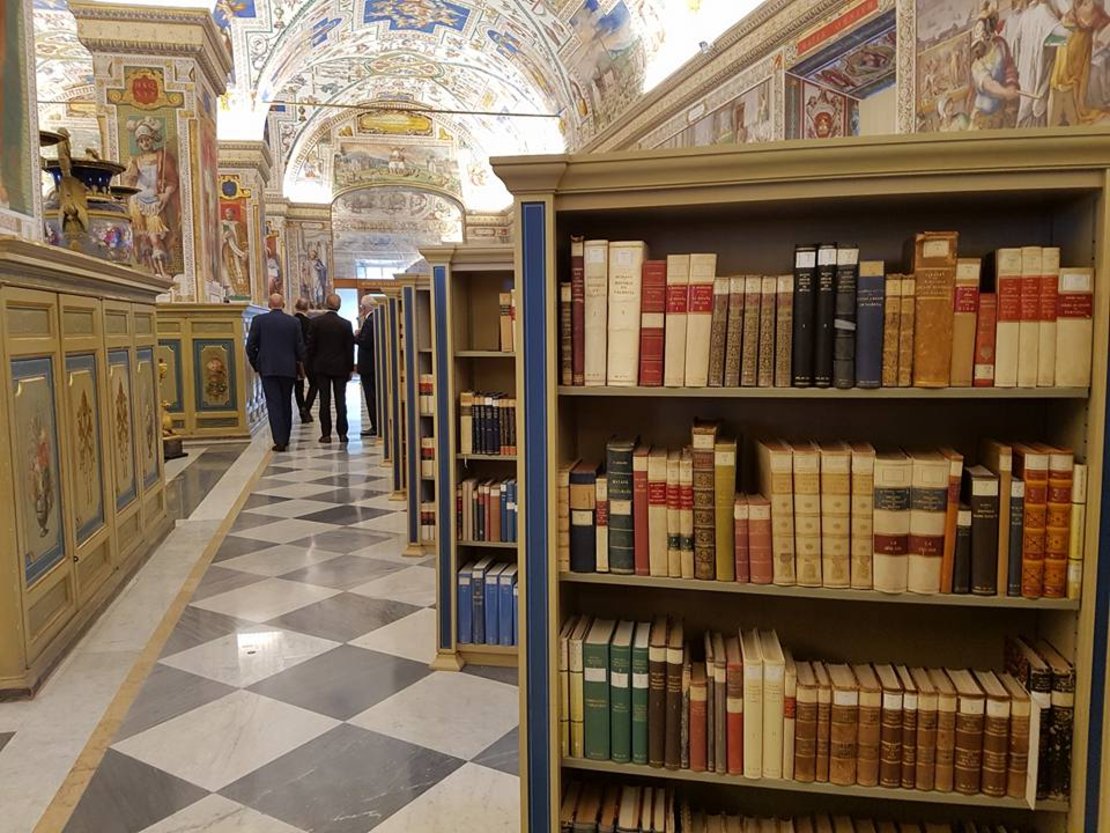How Europe's Space Agency Is Helping Preserve the Vatican Library

The European Space Agency (ESA) will continue its partnership with the Vatican Apostolic Library to preserve, manage and share the library's extensive collection of documents and texts.
The partnership between the two organizations follows a five-year effort to digitize the library’s collection using a special file format called Flexible Image Transport System (FITS), which was developed by NASA and ESA in the 1970s. FITS files allow for universal storage and accessibility, meaning that the files will not have to be reformatted to accommodate future technology.
Both NASA and ESA use the FITS file format to preserve data from numerous space missions and make it accessible to future generations. ESA officials said in a statement that both the Vatican library and ESA "are facing very similar issues in relation to data assets preservation and exploitation and can achieve mutual benefit in cooperating with and complementing each other in lessons learned and experiences." [Best Spaceflight and Space History Books]
Previous preservation methods that were used by the Vatican library involved scanning the delicate files while those files were pressed against a plate of glass, which would inevitably distort them to some degree. However, the FITS scanner software developed for the Vatican Library project automatically accounts for the different angles and generates a more accurate and flat image.
Founded in 1475, the Vatican Apostolic Library is one of the world's largest collections of historical texts, with books covering history, law, philosophy, science and theology. Many of the documents were procured before the advent of the printing press; the oldest are 1,800 years old. Preserving and restoring this collection has become increasingly important in recent years, as seismic events, for example, threaten the longevity of the historical records, officials said in the statement.
"The Vatican Apostolic Library and ESA are two examples that attest to the approach of collaboration for global benefit," Josef Aschbacher, director of Earth Observation Programmes at ESA, said in the statement. "While ESA provides global information about the state of our planet through satellite observations, the Vatican Apostolic Library offers a unique source of wisdom that has contributed to the development of our society and culture."
Follow Samantha Mathewson @Sam_Ashley13. Follow us @Spacedotcom, Facebook and Google+. Original article on Space.com.
Breaking space news, the latest updates on rocket launches, skywatching events and more!

Samantha Mathewson joined Space.com as an intern in the summer of 2016. She received a B.A. in Journalism and Environmental Science at the University of New Haven, in Connecticut. Previously, her work has been published in Nature World News. When not writing or reading about science, Samantha enjoys traveling to new places and taking photos! You can follow her on Twitter @Sam_Ashley13.
